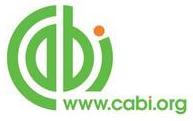Innovative Approaches in Paddy Cultivation: An Analytical Study of Adoption Trends
DOI:
https://doi.org/10.26725/JEE.2023.1.35.6961-6968Keywords:
Adoption; Hybrid Rice varieties; Farmers; Technologies; Innovation; Productivity; Paddy Cultivation; AssamAbstract
Adoption of farm innovations in food crops is necessary to modernize agricultural practices, improve efficiency and increase yields to meet the growing global food demand. This study analysed the adoption trends of innovations in paddy cultivation. Key innovations were identified including the adoption of advanced agricultural machinery starting from seed preparation to harvesting and storage, improved irrigation systems and utilization of hybrid rice varieties by interviewing the paddy farmers of Assam, India. Percentage analysis and paired t-test were used to assess the impact of innovations on rice crop productivity. The results of the study indicate a positive and progressive trend in the adoption of innovations in paddy cultivation. The widespreadacceptance of improved machineries and a diverse array of hybrid rice varieties showcases a collective effort among farmers to enhance productivity, optimize resource utilization, and embrace sustainable agricultural practices. To maximize the benefits of these innovations, farmers must receive adequate training.References
Gopal, R., Jat, R. K., Malik, R. K., Kumar, V., Alam,M. M., Jat, M. L., ... & Gupta, R. (2019). Direct dry seeded rice production technology and weed management in rice based systems. Gates Open Research, 3(207), 207.
Kumar, P., Sahu, N. C., Ansari, M. A., & Kumar, S. (2023). Climate change and rice production in India: role of ecological and carbon footprint. Journal of Agribusiness in Developing and Emerging Economies, 13(2), 260-278.
Mishra, A. K., Pede, V. O., Arouna, A., Labarta, R., Andrade, R., Veettil, P. C., ... & Bouman, B. (2022). Helping feed the world with rice innovations: CGIAR research adoption and socioeconomic impact on farmers. Global Food Security, 33, 100628.
PBAS [Pocket book of agricultural statistics] (2019). Pocket Book of Agricultural Statistics, Directorate of Economics and Statistics, Government of India, New Delhi. Retrieved from https://eands.dacnet.nic.in/ PDF/Pocket%20Book%202019.pdf.
PIB [Press Information Bureau] (2021). Fourth advance estimates of production of food grains for 202021. Retrieved from https://static.pib.gov.in/WriteReadData/specificdocs/documents/2021/aug/ doc202181121.pdf.
Saikia, S., & Barman, U. (2013). Increasing rate of adoption of rice technologies in Assam: aeed of the hour for food security. Journal of Academic and Industrial Research, 1(11), 655-660.
Singh, P. K., & Barman, K. K. (2011). Adoption of rice production technologies by tribal farmers of Mandla District of MP. Indian Journal of Extension Education, 47(3 and 4), 6-9.
Singh, R. B., Paroda, R. S., & Dadlani, M. (2022). Science, technology and innovation. In Indian Agriculture Towards 2030: Pathways for Enhancing Farmers’ Income, Nutritional Security and Sustainable Food and Farm Systems (pp. 213-250). Singapore: Springer Nature Singapore.
Downloads
Published
How to Cite
Issue
Section
License
Copyright (c) 2023 https://creativecommons.org/licenses/by-nc-sa/4.0/

This work is licensed under a Creative Commons Attribution-NonCommercial-ShareAlike 4.0 International License.
Authors who publish with JEE agree to the following terms:
- Authors retain copyright and grant JEE right of first publication with the work simultaneously licensed under a Creative Commons Attribution License that allows others to share the work with an acknowledgement of the work's authorship and initial publication in this journal.
- Authors are able to enter into separate, additional contractual arrangements for the non-exclusive distribution of the journal's published version of the work (e.g., post it to an institutional repository or publish it in a book), with an acknowledgement of its initial publication in this journal.
- Authors are permitted and encouraged to post their work online (e.g., in institutional repositories or on their website) prior to and during the submission process, as it can lead to productive exchanges, as well as earlier and greater citation of published work (See The Effect of Open Access).
Extension Education Society
https://creativecommons.org/licenses/by-nc-sa/4.0/
This work is licensed under a Creative Commons Attribution-NonCommercial-ShareAlike 4.0 International License.













.png)

